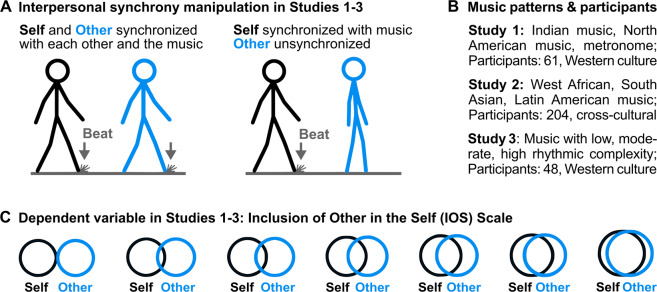Figure 1.
Design of Studies 1–3. (A) Interpersonal movement synchrony was manipulated by using the social entrainment video paradigm. Participants watched two walking stick figures and imagined that one of the figures represents themselves and the other figure represents an unknown person. Left panel: Example of one frame of a video with synchronized virtual self (black) and virtual other (blue). Both figure’s steps are aligned with the quarter beat of the musical pieces. A stylized dust cloud additionally marked the temporal position of the beat. Right panel: Example of one frame of a video with the virtual self in synchrony with the quarter beat of the music and the virtual other out of synchrony. (B) Different musical stimuli used in the three studies and participant samples. (C) Adapted Inclusion of Other in the Self scale (IOS32) used in all three studies. Participants rated the interpersonal closeness between virtual self and other on a continuous slider presented below the 7 circle combinations.

